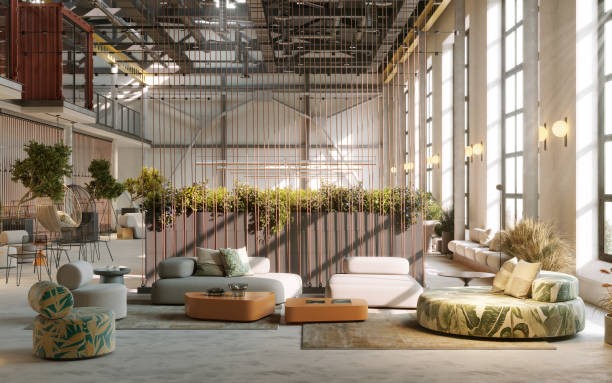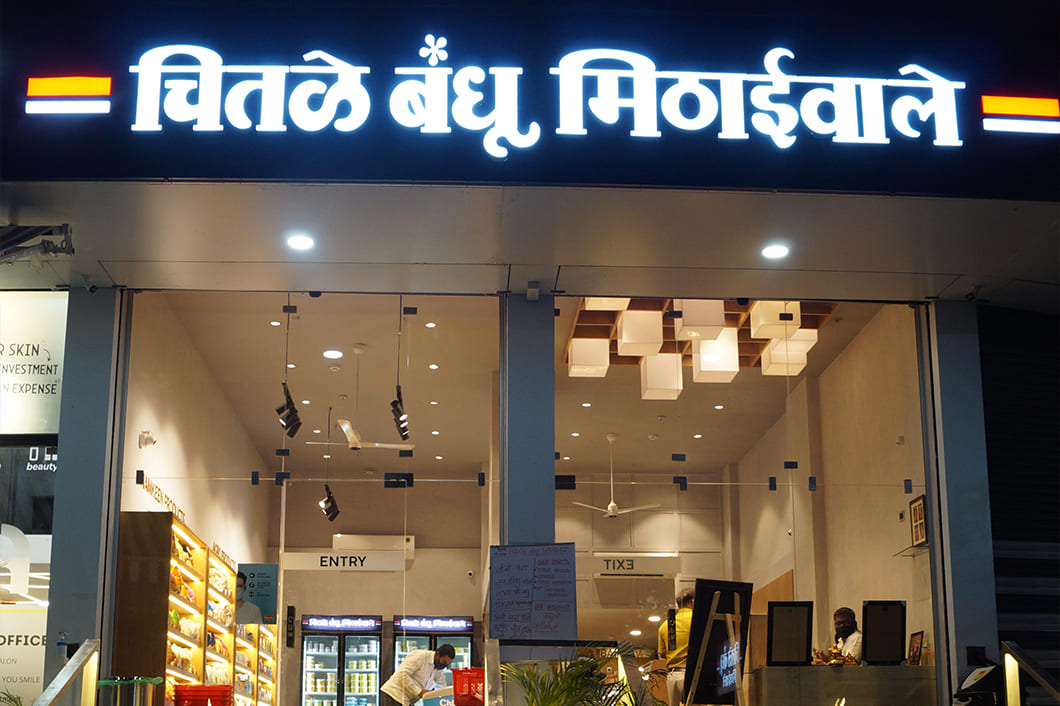Today’s workspace is evolving fast. Currently, 73% of the employees expect flexible work arrangements to become the norm. Modern Workspace Design is now the aim of most companies or organizations are focusing more on slowly turning to hybrid models to enable both remote working and on-site working, according to the preference of the employee. As such, Trendsetting Office Design Ideas today are breaking barriers for creativity, which focuses on usability, productivity, and sustainability.
With 68% of employers finding that a well-designed office boosts employee morale, the emphasis on thoughtful Office interior design has never been more critical.
At oglinginches, the best commercial interior designers in Pune and beyond start to take note, the future of Office interior design is going to be influenced in the coming years by these trends that shape the office into more adaptive, environmental, and people-friendly workplaces.
A. Hybrid Workspaces
Hybrid workspaces combine remote and in-office work, blurring boundaries and driving flexibility in Modern Workspace Design. A hybrid work environment supports the synergies between the advantages of remote work and in-office collaboration, leading to an average productivity boost of 20% for companies adopting it, as people can choose where they work best.
Blending Remote and In-Office Work
The most popular of hybrid work practices is hot desking, where individuals can choose a new desk every day. This has enabled companies to save as much as 30% in real estate costs while creating an excitingly dynamic work environment. Offices can offer a rich variety of workplaces, including collaborative areas, quiet zones, and casual lounges. Flexibility is one of the aspects of hot desking, which makes employees interact and enables them to feel a sense of belonging to a thriving workplace.
Technology Integration
Technology remains the backbone of hybrid workspaces and is applied for seamless collaboration. Video conferencing systems and digital whiteboards represent cutting-edge technology tools to be applied for enhanced collaboration between in-office and remote workers.
Indeed, Modern Workspace Design has become a technology tool for employees 86% per cent of which makes them focus more on smart office solution integration.
B. Sustainable Design
It prioritizes environmental stewardship, resource efficiency, and social responsibility. It aims to create products and spaces that minimize ecological impact while enhancing well-being and fostering community engagement for future generations.
Eco-Friendly Materials
The sustainability design of the trendsetting office design ideas is driven by eco-friendly materials. The companies can reduce the impact of the environment and wasteful usage through recycling, reclaiming, and other sustainably sourced products. For instance, a system of floor-bamboo use or furniture built with recycled metal products reduces waste generation but at the same time gives a different aesthetic appeal.
Energy Efficiency
Energy-efficient designs can help minimize operating expenses and reduce carbon footprint. With the implementation of LED lighting, energy-efficient HVAC systems, and smart controls, offices can cut their energy usage by as much as 30%. These measures not only cost less but also provide comfortable working conditions.
Energy-efficient designs can work as a desirable differentiator in the competitive landscape of commercial real estate for businesses seeking greener practices.
Must Read: Digital Transformation: Creating Connected Workforce Office Design
Green Certifications
Pursuing green environmental certifications like LEED and BREEAM increases the reputation of a company while attracting ecologically aware clients. From obtaining these certifications, specific sustainable criteria in energy consumption, water efficiency, and interior air quality are met.
Companies with green certifications also add up to 10-15% to the productivity and engagement level of their workforce.
C. Wellness-Focused Design
It centers on user well-being, incorporating natural elements, light, and ergonomic features to create environments that promote health, comfort, and a sense of community and belonging.
User-Friendly Furniture
Employee well-being through ergonomic furniture is a big feature of modern trendsetting office design ideas. Ergonomic chairs and desks prevent musculoskeletal disorders, so employees work effectively and are less ill in the office.
User-friendly interventions are a pretty good investment when it comes to adjusting workstations and ergonomic support seating that can help create a healthier workspace. A study found that ergonomic design interventions can lead to a 25% increase in productivity; therefore, well-designed and Future-Proof Office Design is truly a must.
Biophilic Design
Biophilic design incorporates nature into the work environment to improve employees’ welfare. A living wall, natural lighting, and pot plants can improve air quality and reduce stress. It has been proven that biophilic design can increase employees’ satisfaction and creativity by 15-20%. Office interior design that injects the company with nature can result in a more inspiring and productive atmosphere in and out of work life with employees.
Relaxation Areas
The design of relaxing spaces in the office is important for improving mental comfort and encouraging creativity. Means of reducing stress and increasing concentration are offered by seating arrangements that provide resting space for employees while bringing refreshing colors and reflective natural light.
D. Technological Development
Technological development in future-proof office design enhances productivity and collaboration through smart layouts, automation, and integrated tools, fostering innovative workspaces that adapt to evolving employee needs and preferences.
Smart Office Technology
Modern Workspace Design office technology enhances productivity and communication in the workspace. Sensors monitoring occupancy, automatic lighting, and climate control ensure comfort while using the smallest possible energy. Since this is subject to data analytics, companies would find out employee behaviors and preferences that will allow them to give some space that will be adapted according to their needs as time changes.
Virtual Reality(VR) and Augmented Reality(AR)
The technologies of VR and AR have changed the way teams can work and interact on the job. VR is used for immersive training, and AR is used to display a project in real time, so it enhances creativity and productivity.
The two technologies help facilitate collaboration between remote and in-office teams and bridge these gaps for innovative problem-solving. As more and more companies begin to use these tools, the face of Office interior design will dramatically change.
Collaboration Tools
Collaboration tools effectively promote teamwork in hybrids because, in collaboration tools such as project management, communication, and file sharing, teams always stay connected and still work productively, even if they are away from the workplace. Their integration into the workplace design raises collaboration and brings in congruent working conditions.
Must Read: Energy-efficient offices help you save the earth and your pocketbook
Conclusion
Hybrid workspaces, sustainable design, wellness-focused environments, and technological advancements will define Office interior design. At these trends, companies will build Modern Workspace Designs that bring diverse employee needs while advancing productivity and well-being. As commercial interior designers in Pune and beyond innovate, thoughtful design will redefine the workplace experience for a brighter future in office interiors.





